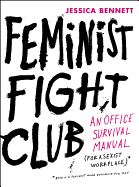Inside the Longlist: Management & Workplace Culture
November 10, 2016
These Management and Workplace Culture books range from advice on radical change to strategic solutions and provide practical examples and innovative approaches for managing your people, how your people manage and represent your product, and how you and your people manage to be happy at and in their work.
It's the day after the US election for President as I write this, and I find myself unable to disentangle my thoughts on the state of our democracy and the writing I've been assigned to do for this post. But the convergence is fitting, it seems, because our workplaces are as diverse as our country. Or perhaps our workplaces are microcosms of our country. We have offices that are progressive, and offices that abide by conservative rules and regulations. We work in industries that can respond to and/or dictate market trends; we work in storefronts for minimal pay and benefits; we work as freelancers with few protections, as CEOs with corner offices, as athletes who globe-trot, as homemakers, baristas, janitors, construction workers.
It's the labor of each person that powers this country's economic engine, so it's little wonder that the state of the job market and strategies to improve it are gamechangers when it comes to choosing a President. People need to work, not only for the money they take home to support their family or the life they live when they aren't at work, but also for their own sense of self. And many people are struggling to figure out where they fit in a new economy that favors white-collar workers and leaves few options for tradespeople. It can seem these folks are habitually looking in the rearview mirror, but if there is no path ahead, where else do they cast their eyes?
It's a tricky thing then to know where business books fit into the lives of all managers and workers. We don't all task in offices decked out with Google-like amenities. Most workplaces are dictated by the nature of the service they provide. Nurses in hospitals, teachers in schools, law enforcement in their cars, and long-haul truckers in their cabs. Too often books about management and workplace culture only address the small percentage of offices that are small and agile enough, or with leaders inventive or rebellious enough, to offer unusual things like flex-time or more expensive things like generous benefits. In truth, far more people have far less control over their work environments than our forward-thinking crop of business books can cover.
Still, in any company, success comes from getting the right people on the bus, to borrow roughly from Jim Collins. And then knowing how best to utilize their talents to the company's advantage. These Management and Workplace Culture books chosen for the 800-CEO-READ Business Book Awards longlist inform and challenge the methods managers use to organize those people into the right seats. But even more importantly, how to treat them while they power the organization with their work. Our hope is that they offer assistance to any manager who looks to improve the work their people do and the workplaces where the work is done.
To that end, these books present new strategies in maximizing the potential of your company's "human capital" (Side note: is there a worse phrase in business jargon these days? People are neither cattle, nor inventory), shore up personnel gaps or limitations, and improve the work environment—all with a nod to the consistent trend of humanistic management that has shaped the category in the years since Tom Peters and Robert Waterman wrote In Search of Excellence. In 2008, we chose that book as one of The 100 Best Business Books of All Time because we felt it redefined management for the better, and our successive lists pay tribute to that kind of progressive thinking. 800-CEO-READ endeavors to review and promote books that contribute positively to the health and welfare of workers, and challenge the status quo with regard to moving business forward to make room for everyone on the bus. Whether constrained by industry requirements, bureaucracy and budget, or presented with opportunities to change up business as usual, these books will find a place on your shelf.
High-quality management and work culture makes all the difference in hiring and retention, in contribution and creativity. The same can be said for the state of our union: when there is regard and respect for each person who casts a vote, and all proposals and policies are directed toward the betterment of people's lives, the more engaged and innovative this country's people will be. We can't always control our government, or the other people who share in our democracy, but we can take steps to apply humanistic principles in our own organizations, and these books range from advice on radical change to strategic solutions with practical examples and innovative approaches for managing your people, how your people manage and represent your product, and how you and your people manage to be happy in the workplace.
These are the five finalists for the Management & Workplace Culture category:

 Communication the Cleveland Clinic Way: How to Drive a Relationship-Centered Strategy for Superior Patient Experience, edited by Adrienne Boissy, MD and Timothy Gilligan, MD, McGraw-Hill Education
Communication the Cleveland Clinic Way: How to Drive a Relationship-Centered Strategy for Superior Patient Experience, edited by Adrienne Boissy, MD and Timothy Gilligan, MD, McGraw-Hill Education
In his books, surgeon and writer for The New Yorker Atul Gawande reflects on modern medicine and the complicated but critical role it plays in our lives. His Checklist Manifesto acknowledges the increased complexity of medical work and how developing and training employees to use a checklist can assist workers in executing their jobs with fewer errors since the human brain can only retain so much information before steps get overlooked. When reading Communication the Cleveland Clinic Way, it wasn't only the medical environment that made me think about Gawande, but also the need for a methodology for training huge groups of employees to change the way they do their work so that their work can be better. This book lays out how the Cleveland Clinic revamped its communication program at all levels to improve their patient satisfaction scores three-fold. This book presents you with an applicable model that will improve your organization's standard of service no matter what industry you are in.
 An Everyone Culture: Becoming a Deliberately Developmental Organization by Robert Kegan and Lisa Laskow Lahey, Harvard Business School Press
An Everyone Culture: Becoming a Deliberately Developmental Organization by Robert Kegan and Lisa Laskow Lahey, Harvard Business School Press
Modern organizations face a particularly difficult challenge going forward, not just from competitors or advancing technology, or even the global marketplace, but also from a dual responsibility to grow the company as well as grow the people within the company. While some managers might grouse about the burden, in An Everyone Culture, Kegan and Lahey explain that helping people realize their maximum potential results in higher levels of performance and profitability. After all, most employees are working hard at hiding their deficiencies, so relieving them of that stress allows them to work more productively. The authors lay out the methods necessary to, and benefits derived from, designing a culture that integrates personal development in an organization’s everyday work. The valuable takeaway of this book is that company goals and people goals can become synergistic and satisfying.
 Feminist Fight Club: An Office Survival Manual for a Sexist Workplace by Jessica Bennett, HarperWave
Feminist Fight Club: An Office Survival Manual for a Sexist Workplace by Jessica Bennett, HarperWave
I read and write a lot about the presence and place of women in business and in business writing, but what is particularly special about Feminist Fight Club is that Bennett pulls no punches, and she asks that women workers don't either. In other words, she's not afraid to "go there." She isn't afraid to call out "menstruhaters" who love to joke about a woman's hormones as a way to question her judgment and the "mansplainer" who condescends to enlighten women on how things work; but she also isn't afraid to call out women who enable their own subjugation by making the coffee, or always taking notes, or giving away the credit for her hard work—and to give them strategies (or "fight moves") to replace their habits (respectively: say you don't know how, don't volunteer, just say thank you). It might feel odd or even uncomfortable for women to take these first steps toward pushing back on the patriarchal norms still present in the modern office, but Bennett has your back.
 Under New Management: How Leading Organizations Are Upending Business as Usual by David Burkus, Houghton Mifflin Harcourt
Under New Management: How Leading Organizations Are Upending Business as Usual by David Burkus, Houghton Mifflin Harcourt
Companies don't change their policies overnight, but that doesn't mean there isn't value in understanding the long game and getting a sense of the field of play. David Burkus's Under New Management is a bit of dream-thinking for most of us as he introduces businesses managers who are doing business differently. The value here is that it expands our capacity for innovative thinking, and makes steps toward a more humanistic workplace all the more obtainable. Maybe you can't emulate Netflix's abolition of any vacation policy, or top-down just decide to make salaries more transparent without preparing for some backlash, but you can consider the costs and benefits of those kinds of changes, as well as gaining an understanding for why employees are happier or more productive when workplace policy is forward-thinking and as creative as they are.
 Winning Well: A Manager’s Guide to Getting Results—Without Losing Your Soul by Karin Hurt and David Dye, AMACOM
Winning Well: A Manager’s Guide to Getting Results—Without Losing Your Soul by Karin Hurt and David Dye, AMACOM
The most pragmatic book to be found on this list, Winning Well, can be considered a toolbox that authors Hurt and Dye have stocked with common sense solutions to a myriad of managerial challenges. Wondering how to get buy-in from your employees for your decision? Chapter 6 guides you through the steps from taking the temperature of the staff, asking for ideas, setting limits for discussion time, deciding who owns the decision, and communicating results. There's also a handy questionnaire at the end of each chapter to help you formulate use. How do you fire employees? Chapter 11. How do you earn the respect of your direct reports as a new manager? Chapter 21. The advice is actionable, the narrative is friendly and instructive, and the structure is so use-able. Managing can be a heavy weight because you bear responsibility for each employee's success as well as the department or company's success. This book will help you do both while staying true to your best intentions under pressure.
*We announced our shortlist on December 6th. To see which of these books will be in the running to be named our book of the year, you can find the 2016 800-CEO-READ Business Book Awards Shortlist in this channel.





